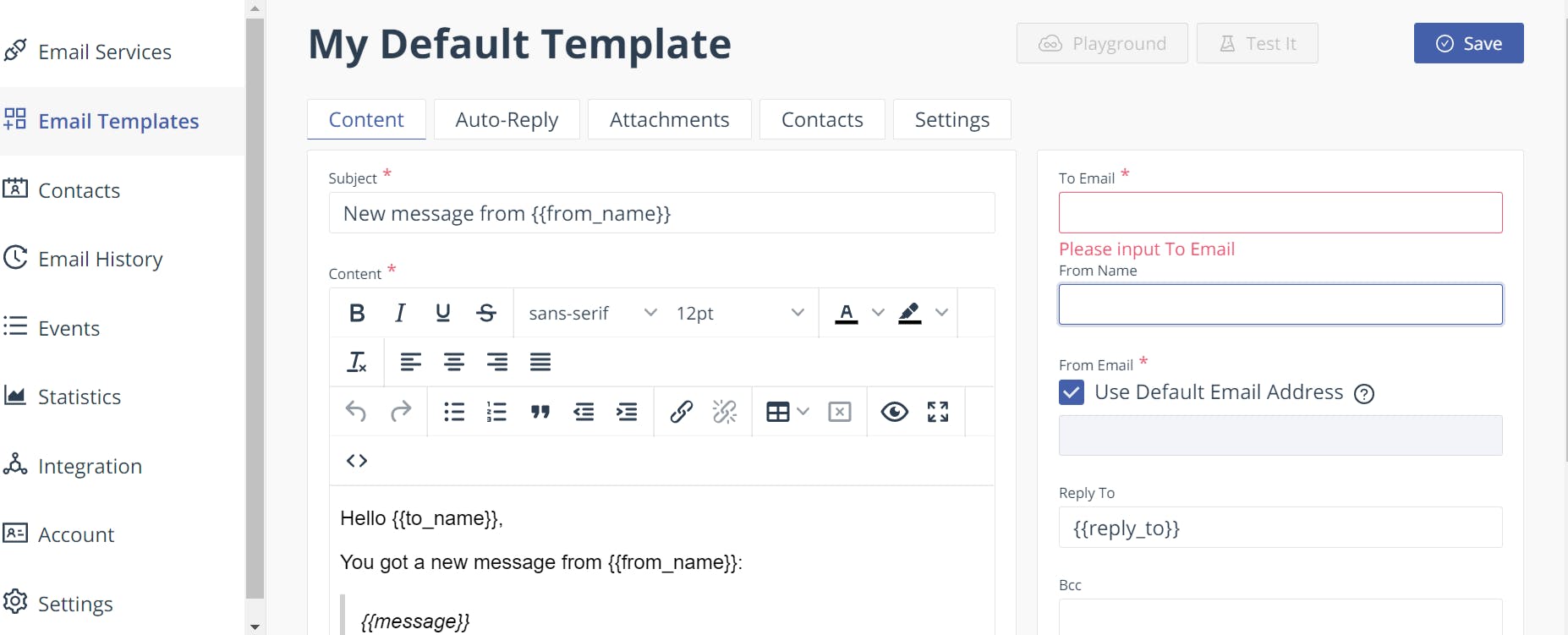Table of contents
No headings in the article.
EmailJS helps to send emails using client-side technologies only. In simple terms, it gives the access to send connect your contact form, directly to your email, without a server from the frontend. The steps to take are,
- Visit the Email.js web page, and create a free account

- Connect your email Once you created your account you can access the EmailJS dashboard. In the dashboard, you can add your preferred email service.
- Create an email template

Open your code in the terminal and type
$ npm install @emailjs/browser --saveOpen your form in your source-code editor and then import email.js with the following snippet
import emailjs from "@emailjs/browser";
- Add your onSubmit method in your form
<form onSubmit={sendEmail}>
<Grid container spacing={2}>
<Grid item xs={12} md={8}>
<h2>Send us a message</h2>
<Grid container spacing={4}>
<Grid item xs={12} md={6}>
<TextField
fullWidth
label="Full Name"
name="name"
className={styles.Contacts__Input}
sx={{ marginBottom: "20px" }}
/>
<TextField
fullWidth
label="Email"
name="email"
className={styles.Contacts__Input}
sx={{ marginBottom: "20px" }}
/>
<TextField
fullWidth
label="Phone"
name="subject"
className={styles.Contacts__Input}
sx={{ marginBottom: "20px" }}
/>
</Grid>
<Grid item xs={12} md={6}>
<TextField
label="Message"
name="message"
multiline
rows={8}
fullWidth
/>
<Button
startIcon={<Send />}
type="submit"
variant="contained"
color="secondary"
sx={{ marginTop: "20px", color: "#fff" }}
>
Submit
</Button>
</Grid>
</Grid>
</Grid>
<Grid item sm={12} md={4}>
<h2>Contact Details</h2>
<h3>Address</h3>
<p>Road 2, B53 ,Ikota Shopping Complex Ajah</p>
<h2>We're Open</h2>
<p>Mondays to Friday 8:00am to 5:00pm</p>
<h2>Phone</h2>
<p>+234-803-403-887-1</p>
</Grid>
</Grid>
</form>
7 Add this code snippet to the script tag
function sendEmail(e) {
e.preventDefault();
emailjs
.sendForm(
"YOUR_SERVICE_ID",
"YOUR_TEMPLATE_ID",
e.target,
"YOUR_USER_ID"
)
.then(
(result) => {
console.log("result: ", result.text);
},
(error) => {
console.log("error: ", error.text);
}
);
e.target.reset();
}
After following these steps you will get your emails to your given email service. EmailJS provides additional features such as auto-reply, adding attachments, requiring CAPTCHA validation.
Thank you for taking out time to read this article and I hope you find this EmailJS guide very useful. Look forward to more informative write-ups from me.